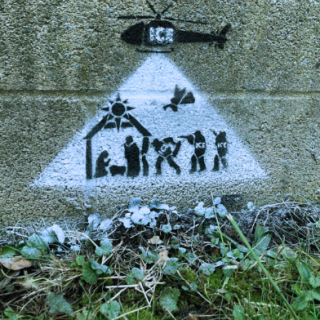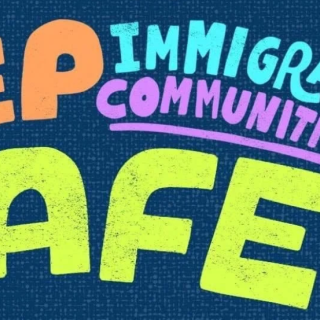Advertisement
It is truly banal to say that we have never seen a First Lady like Michelle Obama; she is, as they say in the fashion world, a one off. Historically, the role of the president’s spouse has always been ill defined. First Ladies–Jacqueline Kennedy hated the term because it sounded like the name of a saddle horse–have no constitutional authority and do not answer to the electorate. However, just by virtue of being the president’s wife, they have tremendous influence. Consequently, American people project their expectations about many things such as gender roles and family values onto America’s Queen Consorts, and the public can be quite fickle when those expectations are not met. No more has this been the case than with Michelle Robinson Obama.
It is no surprise that because there are so many firsts attached to her and her husband, she has had a bumpier ride than most political wives. From the moment she hit the campaign trail–at first reluctantly and part-time–she has fascinated, captivated, aggravated, and infuriated the American public with her unique blend of charm, directness, and joie de vivre. Her every utterance was picked over like jackals feasting on a desert carcass. The media, especially the newspapers, magazines and TV outlets that leaned toward the right, painted her in a number of unflattering ways. Obama was an emasculating women when she described her husband as “stinky, snory” first thing in the morning; an angry black woman when she talked about racial disparities in America; Obama’s Baby Momma; and depicted on the cover of the New Yorker magazine as an afro wearing, gun toting revolutionary bumping fists with her Muslim husband as they stand in the Oval Office under a picture of Bin Laden. Much of the coverage of Michelle Obama has been incredibly racist, sexist, and in excruciatingly bad taste. With the same steely resolve she exhibited as a high school student who spent four hours round trip each day to attend a magnet high school, Obama brushed it off and kept on moving.
To understand Michelle Obama, we have to understand race in America. Her life story parallels the ugly racial history of America–slavery, Jim Crow, the Great Migration and the modern freedom movement. Her paternal great, great grandfather, Dolphus T. Shields, was the son of a slave. (Her black and white ancestors are understandably reluctant to talk about this; whites especially cannot bear to think that their ancestors raped black female slaves. See American Tapestry: The Story of the Black, White and Multiracial Ancestors of Michelle Obama” by Rachel L. Swarns.) Her late father, Fraser Robinson III, was a child of the Great Migration, that mass movement of 1.5 million blacks from the rural south to the urban north in search of better lives in those first few decades of the twentieth century. Yet as the majority of black migrants learned, the north was as segregated as the south, and Chicago was probably the most segregated and racist northern city in America. Blacks were barred from the labor unions and well paying city jobs, and even middle class blacks were relegated to living on the South side. In Chicago, triumphing over poverty and racism was the steepest of uphill climbs. Somehow in the face of discrimination, prejudice and despair, Robinson’s parents, as did millions of other black parents, taught him hope and perseverance and assured him that if he worked hard, he could make his way in the world. Fraser Robinson and his wife, Marian, passed those lessons down to their children, Craig and Michelle.
In spite of living on the wrong side of Chicago, the Robinson children appear to have had a halcyon childhood. Their parents were deeply in love and united in their striving so that their children could have better lives. The family unit was tight; nightly dinners together, game nights and Sunday drives were sacrosanct. In 1963 Robinson got a job at the city water treatment plant where he took care of the boilers, and he worked there for the rest of his life. It was tedious work, but it was steady. There was little money, but Fraser Robinson managed to do well enough so that Mrs. Robinson could stay home with the children. Craig and Michelle, like their parents before them, absorbed the lesson that opportunities were boundless and they had to be ready to take advantage of them. Mrs. Robinson was also deeply invested in her children’s education, teaching them to read at an early age and supplementing school with trips to the library and museums. Michelle and Craig both graduated from Princeton University.
It was at Princeton where Michelle really began to understand “twoness” spoken of by Dr. W. E. B. DuBois, the great black intellectual and leader: She was an American, and she was black. Indeed, the mother of the white woman assigned to be Obama’s freshman roommate had her daughter transferred to another room. She spoke and wrote often about feeling as though she was perhaps not good enough and certainly not welcome at Princeton. Obama bore the slights and indignities with preternatural poise and grace and doubled down on her studies, determined to honor her parents, especially her father, who had set the bar so high for her and her brother. For his part, Fraser Robinson continued to be an exemplary role model for his children. He was diagnosed with multiple sclerosis during the mid 1960's, but even as he grew weaker he continued to work. Toward the end of his life, it was a struggle just to button his clothes, but according to Obama, he was unfailingly cheerful, positive and gritty. “Everything that I think about and do is shaped around the life I lived in that little apartment in the bungalow that my father worked so hard to provide for us.” She is also keenly aware of her Ivy league education and that she is a “statistical anomaly.” Those thoughts appear to be part of the reason a career in a large corporate law firm failed to satisfy her; instead she fixed her eye on public service and is always looking for ways to lift others as she climbs.
One of the most important roles Obama has played is that of challenging the prevailing standard of beauty in America which is white, blonde and thin. She is unabashedly black, and as we say in the black community “healthy.” At 5' 11" her posture is erect and she moves gracefully–a lesson her teenaged daughters have absorbed. And that wardrobe! When she emerged on Inauguration Day in that bespoke lemon grass dress and matching coat, the fashion world swooned. Obama clearly loves clothes, makeup and all things girly and is not embarrassed to admit it. She is a master at mixing high- and low-end pieces, and, especially during her husband’s first administration, has had a tremendous impact on publicly traded retailers. In 2010 Professor David Yermack from New York University studied the impact Mrs. Obama has on publicly traded retailers. According to his research, “Obama made 189 public appearances between November 2008 and December 2009. During that time, she wore items from 29 publicly traded companies, including J. Crew, the Gap, Saks Fifth Avenue and Target. Those companies raked in an estimated $2.7 billion as a result of Obama's donning their apparel.” Not bad for a little black girl from the south side of Chicago!
I maintain that Americans should be glad that the Obamas represent us to the wider world. They are a terrific example of all the attributes we claim to hold dear: hard work, the importance of education, perseverance, meritocracy, and public service. The Obamas also show the world what black love, affection, family–Marian Shields Obama, the First Grandmother, came with them to Washington to help rear the Obamas’ daughters–and a healthy union look like, something we seldom see depicted anywhere. They clearly revel in each other’s company.
All but about one hundred pages of Michelle Obama: A Life are about her life before she became the First Lady, and that is as it should be. More than any other First Lady, her role is shaped by lessons learned long before her entry into public life. The last portion of the book, which covers that role feels rushed and like an afterthought, as though Slevin knows the reader can easily find information about Obama’s public role without his help. No matter. Peter Slevin has written an illuminating book, not just about Michelle Obama, but about race, gender, class and history in America.
.



